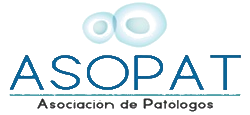This is also the phase when any flaws can be identified and addressed. It is also a chance to look at the effectiveness of the development process itself. Important lessons can be learned through evaluation that could have a positive impact on future projects. Synopsys Application Security Testing Services offer the solution for applying AppSec testing effectively across your full application portfolio.

As you can see, the daily habits of most individuals heavily rely on software. Transportation, food, work, shopping, dating, entertainment — software is revolutionizing nearly every aspect of our lives. That’s great news for software developers, as they’re the ones who build the programs, systems, and https://globalcloudteam.com/types-of-software-development/ applications on which we rely so much. And it is a critical step among all the steps in the software development process because it sets the stage for all subsequent activities. With a clear understanding of the client’s needs, developing a software product that meets their expectations is possible.
Types of Software Development — Explained
Your goal will be to build efficient programs and systems that serve user needs. In this role, you should be a team player with a keen eye for detail and problem-solving skills. If you also have experience in Agile frameworks and popular coding languages (e.g. JavaScript), we’d like to meet you. Fans of open source software point to the fact that the community consists of perhaps tens of millions of people worldwide.

Open DevOps starts with Jira Software, Confluence, Bitbucket, and Opsgenie. Teams can easily add the tools they want, such as GitHub or GitLab, with a single click. However, regardless of the model you pick, there are a lot of tools and solutions, likeStackify’s Retrace tool, to assist you every step of the way.
Key Hard Skills for Software Developers
This document should outline all the functionality that is required, as well as any specific constraints or dependencies. With a clear understanding of the project requirements, it is easier to develop a quality software solution. After a software development project has been initiated, the first step is to perform a requirements analysis. It allows the project team to understand what the customer or user is looking for clearly. A waterfall model is a traditional software development approach involving a linear process. Software developers typically have excellent job prospects, as the demand for new and innovative applications is always high.

Establish communication between end-users and developers, which keeps the team on the right track. Good in ironing out potential issues in the early development stage, which greatly reduces product failure risk. With the lean methodology, developers are tasked to identify bottlenecks that could hamper the process. The methodology also emphasizes human respect, which means communication is key to enhancing team collaboration. It doesn’t include customer feedback in the early phases, which increases the risk of the project veering off target. The linearity of the waterfall model makes it easy to understand, particularly for new developers.
Need of Software Engineering
Since development teams work well remotely, it is best to go with a remote developer so that you can consider the best global tech talent for the role. Hiring a remote recruitment agency that specializes in tech recruitment is the perfect answer to your tech recruitment woes. Get in touch with DistantJob today to hire a certified web developer remotely.
- Many jobs that use software development skills include software developers, engineers, and system administrators.
- In simplest terms, web development is creating websites using HTML, CSS, or Javascript.
- Hopefully, you found this article helpful and have a better understanding of what software engineering entails.
- Web applications are software developed for a specific purpose, hosted on a web server.
- A well-organized team and workflow aren’t enough to ensure software development success.
- Failure to take into account the needs of customers and all users and stakeholders can result in a poor understanding of the system requirements at the outset.
Software development is the process of creating and maintaining computer software. It involves a wide range of activities such as coding, testing, debugging, and documenting. Software developers use programming languages such as C#, Java, and Python to create software applications. They also use frameworks and libraries such as .NET, Spring, and Hadoop to develop complex software applications. Software engineering is the branch of computer science that deals with the design, development, testing, and maintenance of software applications. Software engineers apply engineering principles and knowledge of programming languages to build software solutions for end users.
Project Manager
Accelerate and scale application security testing with on-demand resources and expertise when you lack the resources or skills to achieve your risk management goals. The project manager has a more hands-on role in software development than the product owner. They are responsible for breaking down tasks and delegating them to the appropriate team members. Moreover, they facilitate communication within teams and track project milestones and timelines.
Security is an essential aspect of any software development process. However, unlike traditional software development that addresses security as a separate stage, SDLC addresses security every step of the way through DevSecOps practices. SDLC works by lowering the cost of software development while simultaneously improving quality and shortening production time. SDLC achieves these apparently divergent goals by following a plan that removes the typical pitfalls of software development projects. Software developers must be able to identify the issue that a piece of software aims to remedy and build software that solves the problem.
Software Development Sources
Synopsys solutions help you manage security and quality risks comprehensively, across your organization and throughout the application life cycle. The final product may exhibit some issues, so it is imperative that the team continuously monitors the software’s status. Furthermore, this is the time to gather customer feedback and conduct studies to integrate new features, enhancements, and fixes. Agile is an iterative approach to project management and software development that helps teams deliver value to their customers faster and with fewer headaches. Agile methodologies are immensely popular in the software industry since they empower teams to be inherently flexible, well-organized, and capable of responding to change.

Comentarios recientes